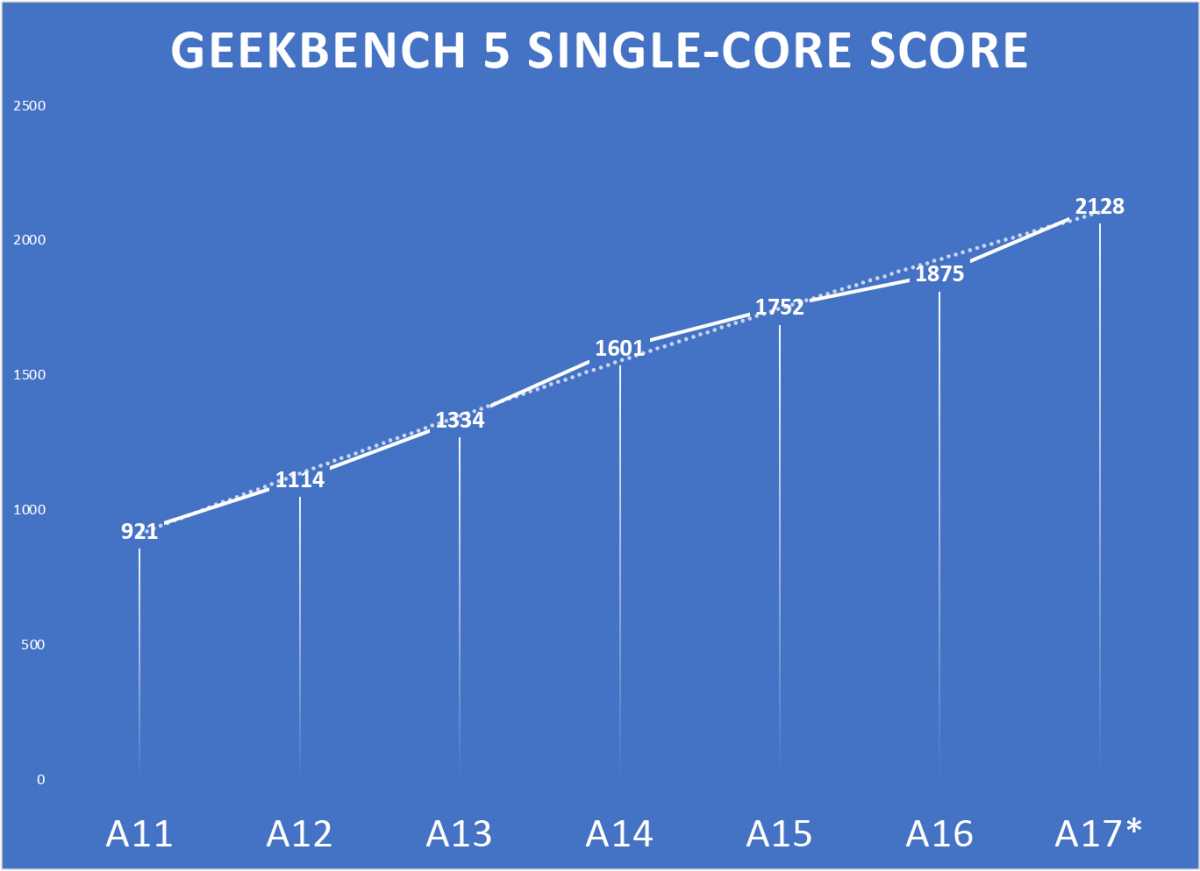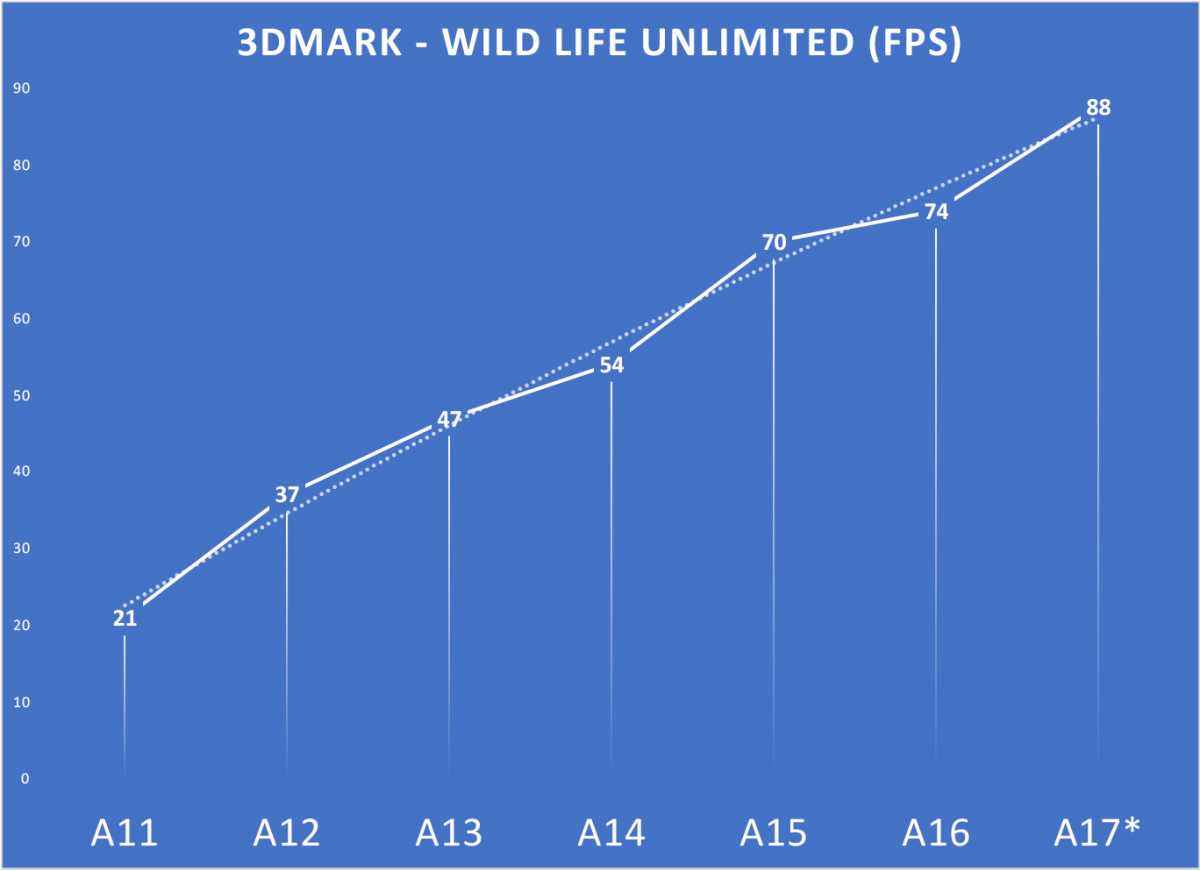Every year, Apple presents a brand-new A-series processor with its iPhone upgrades in the fall. We do not anticipate anything various this year. In truth, the dive to a brand-new production procedure innovation– TSMC’s 3nm procedure– offers the A17 a chance to be the most substantial leap in efficiency and functions in a number of years.
By taking a look at the previous years of internal Apple-designed A-series chips, together with what we understand about the production innovation offered and the business’s instructions and objectives, we can piece together a respectable informed guess about what to get out of the A17.
Simply for iPhone 15 Pro (or Ultra)
In 2015, the A16 was unique to the iPhone 14 Pro, while the basic iPhone 14 utilized the A15. We anticipate a repeat of that pattern this year, where the brand-new A17 is unique to the iPhone 15 Pro and iPhone 15 Pro Max (or iPhone 15 Ultra, if the reports hold true) and the basic iPhone 15 gets the A16 utilized in the iPhone 14 Pro designs.
Is this the method forward for Apple for the foreseeable future? With smart device functions and quality reaching something of a plateau and Apple’s phone chips running circle a lot of Android phones, there’s little factor to alter. For Apple, it lowers expenses and assists develop a larger differentiator in between routine and Pro designs, which tends to press clients towards the more pricey iPhone.
Apple’s very first 3nm chip
The A14, A15, and A16 were all used a 5nm production procedure from TSMC. Approved, that procedure has actually progressed in time, producing chips that are denser and have actually enhanced power performance, however there’s absolutely nothing rather like the leap to the next significant procedure node. Which’s what we’re likely going to get with the A17– the very first massive customer chip made with TSMC’s 3nm procedure.
I composed at length about the benefit Apple will delight in with a 3nm procedure, and the huge one is more density– while the A16 had to do with 16 billion transistors, we can anticipate well over 20 billion for the A17, maybe as high as about 24 billion.
The 3nm procedure provides more power performance, with an equivalent chip at an equivalent speed, however Apple isn’t going to make an equivalent chip at an equivalent speed. Optimum power draw will be restricted by battery size, thermal dissipation, and other elements, and I do not believe we can anticipate an enormous shift in battery life from the transfer to 3nm alone. A minimum of, not for active usage under complete power– not just will the chip most likely take in almost as much power because circumstance, however the display screen and radios likewise contribute a lot to the power drain.
Where we might see some enhancement remains in standby mode, which might get significantly much better with the transfer to the 3nm procedure.

Foundry
CPU efficiency and functions
ARM released its v9 architecture in 2021, and we believed the A16 may be Apple’s very first chip to support the brand-new v9 guideline set. Rather, it supports ARM v8.6 with a lot of Apple’s own extensions. This year, with a greater transistor spending plan, it appears ARM v9 assistance is most likely.
What benefits do the ARM v9 guideline set and architecture supply? Apple develops its own CPU cores, and a lot of the efficiency advantages assured by the v9 architecture are currently recognized in Apple’s styles and ARM extensions. Undoubtedly, the Snapdragon 8 Gen 1 was among the very first high-end smart device CPUs with ARM’s Cortex-X2 core with assistance for ARM v9, and Apple’s A15 exceeded it by a broad margin.
You’ll see a great deal of claims that ARM v9 provides a 30 percent efficiency enhancement over ARM v8, however that’s for ARM’s own core styles, and does not take into consideration making use of customized extensions. Apple’s in an entire other league here– we most likely will not see 30 percent quicker CPU efficiency from the A17.
Apple’s brand-new CPU cores for the A17 will likely be quicker, however not always due to the fact that of the shift to ARM v9. CPU core efficiency is affected by the guideline set, branch forecast, guideline decode, execution systems, cache structure and size, clock speeds, and lots of other elements.
As far as basic core count goes, there does not appear to be much factor for Apple to move beyond the 4 performance cores and 2 efficiency cores that have actually been with us because the A11 Bionic. We simply anticipate an excellent 15 percent more efficiency out of them.

Foundry
Just predicting the last a number of years of CPU efficiency enhancement, we can most likely anticipate a Geekbench 5 single-core rating in between 2,100 and 2,200, and a multi-core rating of simply over 6,000. Geekbench 6 was simply launched and we do not have years of benchmark information to develop a precise forecast, however a single-core rating of over 2,800 and a multi-core rating of 7,300 or more appears reasonable. A current leakage that declares a single-core rating of 3019 and a multi-core rating of 7,860 isn’t out of the world of possibility– specifically because we saw a larger-than-expected leap when Apple moved from a 7nm procedure to a 5nm one with the A14– however numbers this early are most likely totally comprised.

Foundry
In case you’re questioning how that accumulates to other processors, that would provide the A17 a single-core rating comparable to the current Ryzen high-end desktop CPUs and 13th-gen Core i7 Intel processors, however a far lower multi-core rating (that makes sense, as we’re speaking about just 2 high-performance cores versus 12 or more in those desktop processors). The A16 currently peacefully beats Android phones with the top-tier Snapdragon 8 Gen 2, and the A17 needs to just broaden the space.
If we have actually discovered anything throughout the years, it’s simply how consistent the efficiency enhancement is for Apple’s CPUs. Single- and multi-core efficiency increases at an almost straight line, no matter which years have huge architectural modifications or making procedure leaps. It’s really affordable to anticipate a comparable enhancement this year.
GPU efficiency and functions
The GPU is one location where the A17 might possibly be really intriguing. Apple has actually been increasing GPU efficiency by approximately around 20 percent or two with each brand-new A-series chip, though it can be anywhere from 15 percent to 30 percent. What hasn’t altered a lot is the total function set of the GPU. It’s getting quicker, and there have actually been some small brand-new functions like variable rasterization rates and SIMD enhancements for GPU calculate, however Apple is years behind desktop GPUs in crucial functions like ray tracing velocity.
A questionable report stated that the A16 was planned to have a significant GPU architecture however it wasn’t all set in time, so it got the very same GPU as the A15 (however more memory bandwidth enhances efficiency). I do not understand if that holds true, however Apple hasn’t upgraded its Metal function set tables for designers to consist of the A16, which is informing.
I believe it’s most likely that Apple has actually an upgraded GPU architecture all set to opt for A17. Functions like ray tracing velocity might not be crucial for iPhone, however this GPU style will discover its method into future M-series Mac processors, where the absence of sophisticated GPU functions like ray tracing velocity put them far behind cutting-edge.
We can likewise anticipate better efficiency in present 3D video games and applications that utilize the GPU for calculation. When the architecture modifications, the speedup tends to be variable– some things get a lot quicker, and other things not a lot.

Foundry
Persevering with an approximately 20 percent speedup produces a Geekbench 5 GPU calculate rating of over 18,000. Keep in mind, that benchmark steps the computational efficiency of the GPU, not its capability to render 3D graphics.

Foundry
For 3D graphics, a 20 percent speedup would lead to the modern-day 3DMark Wild Life Unlimited trial run at around 88fps versus 74fps with the A16. Presently, the Snapdragon 8 Gen 2 is quicker than the A16 in this test (and other 3D graphics tests), however this would put Apple somewhat ahead.
Relative to CPU enhancements, GPU efficiency is more diverse from year to year. The enhancement from A15 to A16 was silenced, owing mainly to minor clock speed enhancements and enhanced memory bandwidth. This year, if we get both a brand-new GPU architecture and a significant production procedure enhancement, the leap might be much bigger.
The media engine is typically loosely connected with the GPU, therefore this is as excellent a time as any to state we will when again wish for hardware to speed up encode and translate of the AV1 format. It remains in the majority of the brand-new generation of PC GPUs, after all. We anticipate Apple to continue to buy the efficiency and power performance of its encoders for H. 264, HEVC, and ProRes formats.
An ongoing concentrate on ML and AI
Apple is huge into artificial intelligence and AI. While it does not seem pressing as difficult as its rivals in the generative AI race led by jobs like ChatGPT, Midjourney, and Steady Diffusion, the business has actually utilized AI and artificial intelligence throughout its os and apps for several years. New functions like the capability to choose text in pictures are carried out all the time, and Apple devotes a great deal of location to its Neural Engine (the accelerator for artificial intelligence jobs).
In the A16, Apple didn’t appear to alter the Neural Engine much at all. It’s still 16 cores, and at 17 trillion operations per second is just 8% faster than the A15’s Neural Engine. That’s a little adequate leap to presume it merely performs at a greater clock speed. Honestly, we anticipated far more.
With the 3nm procedure making a much larger transistor spending plan possible, the Neural Engine will most likely take a substantial leap. It might be simply more cores, huge style modifications to the method the cores run, or both. I ‘d be shocked if it does not provide over 20 trillion operations per 2nd, though there is some argument over whether “trillions of operations per 2nd” is actually the very best method to determine efficiency.
Faster LPDDR5x RAM
With the A16, Apple enhanced the RAM to LPDDR5 (from LPDDR4x in the A15). Completing top-tier chips like the Snapdragon 8 Gen 2 usage LPDDR5x, which provides about 33 percent more bandwidth and lower memory latency while utilizing the very same power.
More memory bandwidth benefits whatever, specifically when it does not utilize more power. The most apparent recipient will be high-end 3D video games, which worry both CPU and GPU in manner ins which press the limitations of memory bandwidth.
Apple’s not constantly the fastest to get on brand-new memory requirements, however it does focus on memory bandwidth and huge caches and appears to acknowledge the advantage of moving things around quicker rather of simply processing things quicker. I provide it 50/50 chances that we’ll see LPDDR5x RAM in the A17.
Still a Snapdragon modem (in the meantime)
Apple is anticipated to begin utilizing its own 5G modems beginning next year, most likely with the iPhone SE in the spring and, if things work out, later on in the iPhone 16 line in the fall.
The Snapdragon X70 is most likely the modem Apple will utilize for the iPhone 15 line (a minimum of the Pro designs). The majority of the X70’s top-line functions sound generally the like the X65 that you discover in the iPhone 14 Pro, however it has actually a little incorporated AI processor that continuously keeps track of and enhances connection states, which is expected to lead to more steady and ideal connections. That it is expected to enhance real-world speed and increase battery life also.